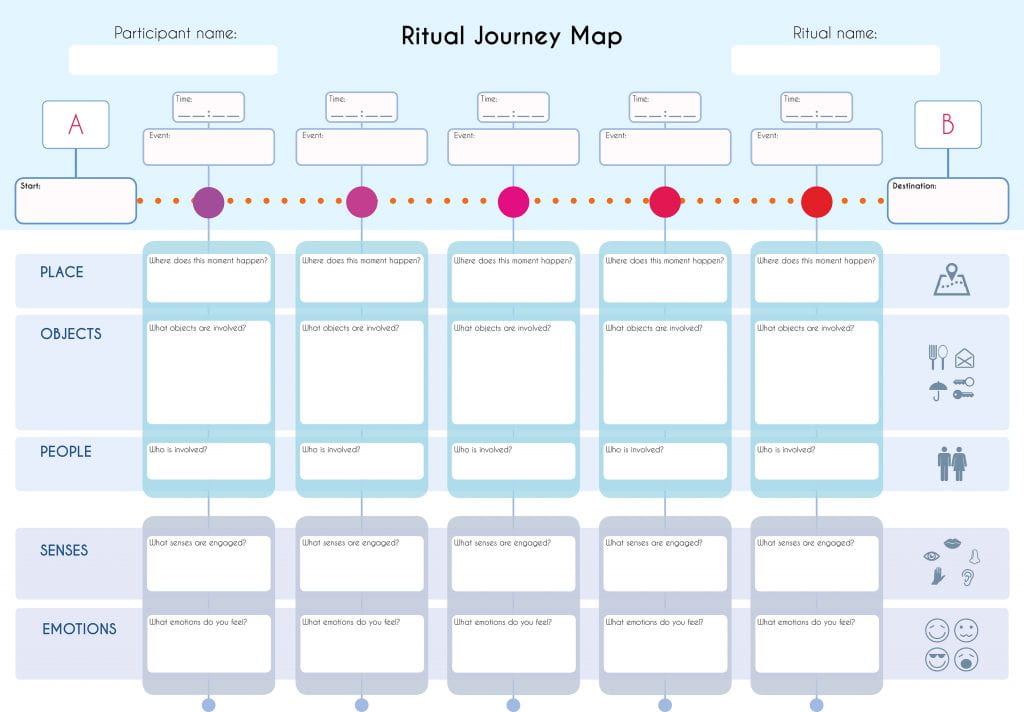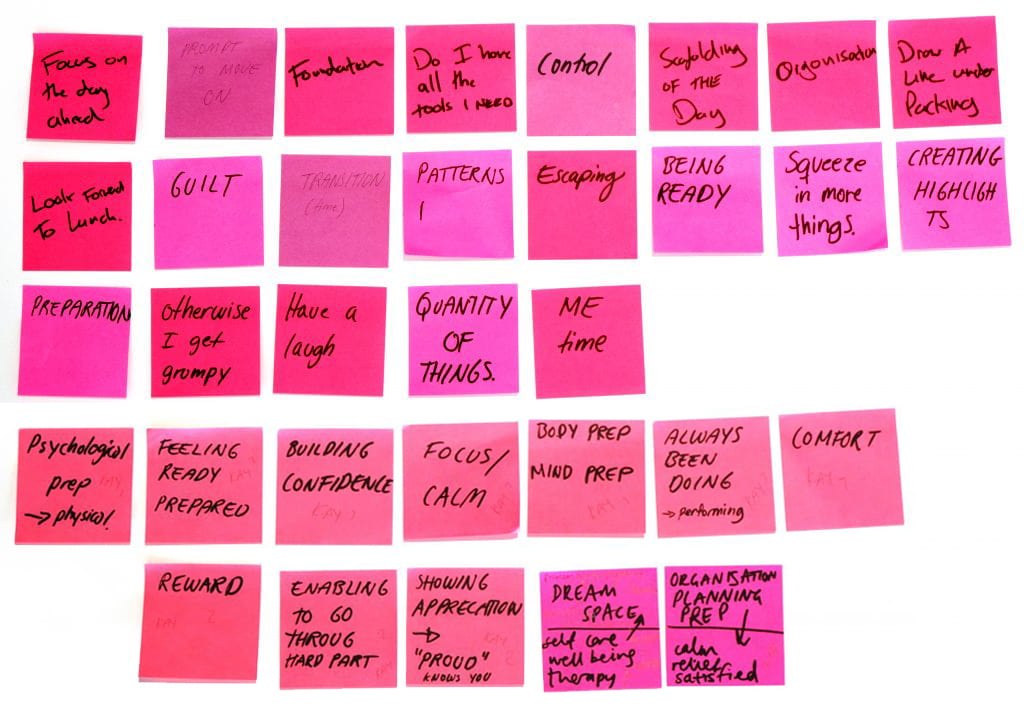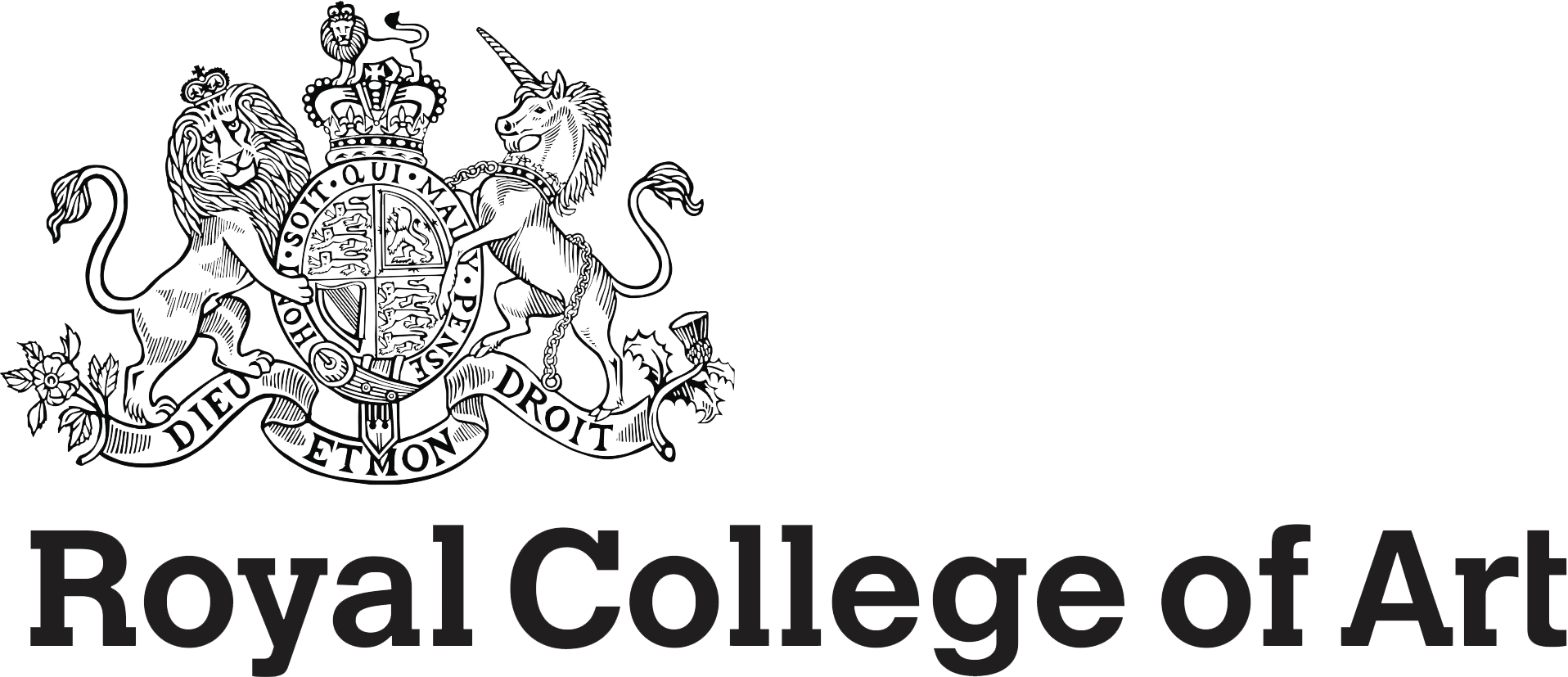5 Enactment Workshops Around Mobility Rituals

One participant mapping their journey rituals.
Before we held the workshops we identified three categories that would help us to unpack user experience; these were Conditions – the time, place and objects involved; Emotions – the senses and emotions felt; Meaning – what the ritual means and why they perform it.

The ‘Ritual Journey Map’ encouraged the participants to map the places, objects and people involved in their everyday rituals. The senses and emotions experienced during these rituals were then plotted underneath..
In the Ritual, Experience and Emotion workshops we asked the participants to consider their everyday travelling and longer journeys to an unknown destination. We dissected each person’s journey into step-by-step stages to analyse their user experience. Prior to the workshops each person had been asked to bring with them one or more objects that they associate with a meaningful action they often repeat when travelling. We recorded these on our Ritual Journey Map under the headings: Place – where the moment happens; Objects – what objects are involved; People – who is involved; Senses – which senses are involved; and Emotions – what emotions were experienced. After revealing details of these we asked the participants how significant the rituals were to them and whether they were meaningful beyond being merely functional.
Participants used props to reconstruct and enact journeys.
The findings helped us identify six key themes around ritualistic mobility experiences. These were:
- Physical organisation and mental preparation
- Playful in-vehicle activities
- Vehicle as an extension of the driver
- Relationships and personalisation within shared vehicle spaces
- Transitional mindsets
- Post journey events

Keywords collected during the workshops.
Previous Chapter
